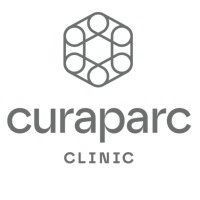Artificial hip joint: What types of prostheses are there and which one is right for you?
Basics of the artificial hip joint (hip prosthesis / THA)

The use of an artificial hip joint, also known as a hip endoprosthesis (THA), can significantly improve the lives of many patients. It is important to choose the right type of prosthesis that meets the patient's individual needs and living circumstances. This blog post explains the different types of hip prostheses and presents the criteria for choosing the appropriate prosthesis.
Artificial hip joint: An overview
Hip arthroplasty has evolved significantly over the past few decades. Modern prostheses offer a high quality of life and enable patients to lead an almost normal life after surgery. Selecting the right type of prosthesis is crucial to the success of the operation and long-term patient satisfaction.
Types of artificial hip joints
1. Cemented hip prosthesis
The cemented hip prosthesis is anchored in the thigh bone using a special bone cement. This method provides rapid stability and is often used in older patients or those with poor bone quality.
Advantages:
Fast stability after surgery
Suitable for older patients and those with osteoporosis
Disadvantages:
The bone cement can break down over time
More difficult to replace during revisions
2. Cementless hip prosthesis
Cementless prostheses are anchored in the bone using a special surface coating that promotes bone ingrowth. This method is often used on younger, more active patients because it promises longer durability.
Advantages:
Longer durability due to bone ingrowth
Better option for younger and more active patients
Disadvantages:
Longer healing time required
Not suitable for patients with poor bone quality
3. Hybrid hip prosthesis
The hybrid hip prosthesis combines cemented and cementless technology. The shaft is cemented and the socket is anchored cement-free. This method combines the advantages of both techniques and offers a good alternative for many patients.
Advantages:
Combining the advantages of cemented and cementless prostheses
Flexibility in application
Disadvantages:
May require more complex surgical techniques
4. Short stem prosthesis
The short-shaft prosthesis is a relatively new development and is characterized by a shorter anchorage in the femur. It is often used in younger patients because it preserves more bone and better mimics the biomechanics of the hip.
Advantages:
Preservation of more bone substance
Better adaptation to the natural biomechanics of the hip
Disadvantages:
Not been in use for that long, so fewer long-term studies
5. Duo head prosthesis
The duohead prosthesis is often used in older patients with lower physical activity. It consists of two head components that provide additional stability.
Advantages:
Increased stability and mobility
Less risk of dislocations
Disadvantages:
Limitations in long-term durability
Criteria for choosing the right artificial hip joint
1. Age and activity level
The patient's age and activity level are crucial factors when choosing a hip prosthesis. Younger, more active patients often benefit more from cementless or short-stem prostheses because they offer longer durability and better adaptation to natural hip movement.
2. Bone quality
The quality of the bone plays an important role in deciding the type of anchoring. Patients with good bone quality can receive cementless prostheses, while cemented prostheses are preferred for those with poor bone quality.
3. Lifestyle and expectations
The patient's lifestyle and expectations should also be taken into account. Patients who lead an active lifestyle and are athletic may require a different prosthesis than patients who are less active.
4. Pre-existing conditions and medical history
Existing previous illnesses, such as osteoporosis or arthritis, as well as the patient's medical history can influence the choice of prosthesis. It is important to consider all medical aspects to make the best decision.
Preparing for hip replacement surgery
Prehabilitation
Prehabilitation, i.e. preparing the body for surgery through targeted training and exercises, can improve the healing process after surgery. Being in good physical shape before surgery can shorten recovery time and improve long-term results.
Clarification and expectations
Detailed information about the procedure of the operation, the different types of prostheses and the expected results is essential. The patient should have realistic expectations and be informed about the possible risks and complications.
After surgery for an artificial hip joint
rehabilitation
Rehabilitation plays a crucial role in the success of the artificial hip joint. An individually tailored rehabilitation program helps to restore hip mobility and strength and optimize the function of the prosthesis.
Long-term care and aftercare
Regular follow-up examinations are important to monitor the condition of the prosthesis and to react early to possible complications. The patient should also be informed about proper care and possible activities to maximize the life of the prosthesis.
Modern technologies and materials
The development of new technologies and materials has revolutionized hip arthroplasty. From modern imaging techniques to advanced materials such as ceramics and highly cross-linked polyethylene, these innovations offer better results and longer durability of artificial hip joints.
1. Ceramic components
Ceramic components are known for their durability and biocompatibility. They offer high wear resistance and a smooth surface that reduces friction in the joint.
Advantages:
High wear resistance
Low risk of allergic reactions
Disadvantages:
Higher cost
Risk of breakage under high loads
2. Highly cross-linked polyethylene
Highly cross-linked polyethylene is an advanced plastic material used in the socket component of hip replacements. It offers increased wear resistance and reduces the risk of loosening.
Advantages:
Increased wear resistance
Reduced risk of loosening
Disadvantages:
Possible long-term complications are not yet fully known
3. 3D printing technology
The use of 3D printing technology allows the creation of tailor-made prostheses that are perfectly adapted to the patient's anatomy. This can improve the fit and comfort of the prosthesis.
Advantages:
Tailored fit
Improved comfort and function
Disadvantages:
Higher cost
Complexity in manufacturing
Conclusion
Choosing the right type of prosthesis for a hip replacement depends on various factors, including the patient's age, bone quality and lifestyle. Thorough advice and preparation are crucial to achieve the best possible results. Modern technologies and materials offer a variety of options that can be tailored to individual patient needs. With the right prosthesis and comprehensive rehabilitation, an artificial hip joint can significantly improve quality of life and enable pain-free mobility.
MAKE AN APPOINTMENT?
You are welcome to make an appointment either by phone or online .



























